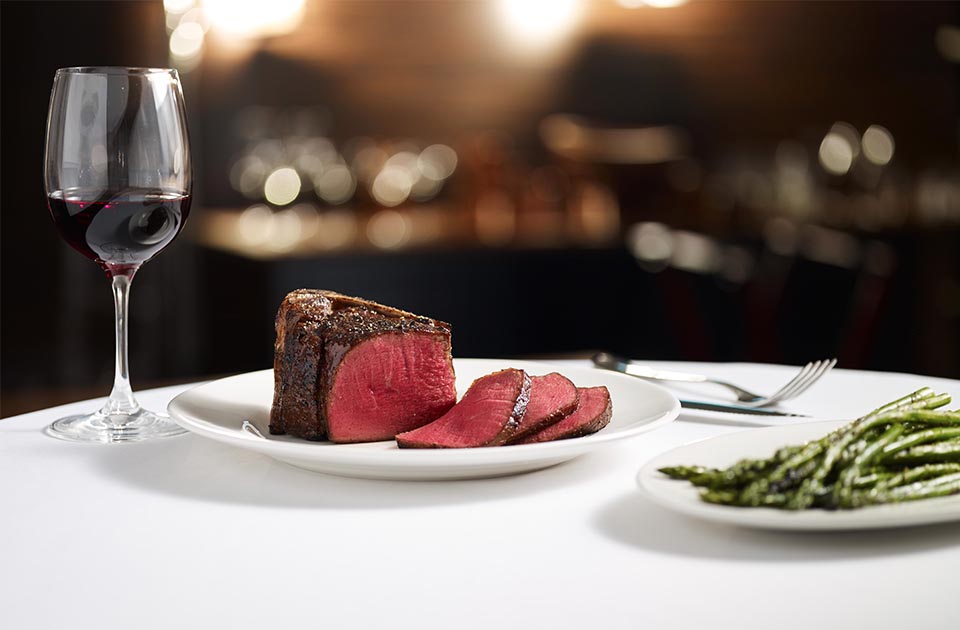
A perfectly cooked steak isn’t just a meal—it’s an experience. From the moment your knife glides through a tender ribeye to that first juicy bite, everything hinges on one thing: temperature. Understanding steak doneness levels and steak temperatures isn’t just for chefs behind the grill—it’s for anyone who wants to enjoy a next-level steak at home or order like a pro at a steakhouse.
So whether you prefer a cool, crimson center or a firm, fully-cooked cut, this steak temperature guide will help you decode the delicious science behind every level of doneness.
Understanding Steak Doneness Levels
What Is Steak Doneness?
Steak doneness refers to how thoroughly a steak is cooked and its varying degrees, ranging from rare to well done. Each level represents a different internal temperature, which directly affects the flavor, texture, and juiciness of the meat.
At one end of the spectrum, rare steaks offer a cool, red center with a buttery softness that nearly melts on your tongue. At the other end, well done steaks have no trace of pink, boasting a firmer bite with deep, caramelized flavors from the sear. The magic happens in between, where steak doneness levels balance tenderness with bold flavor.
Why Steak Temperature Matters
Get to know the degrees you need for the perfect flavor and texture.
Without the right heat, your steak cooked result can fall short of expectation. Steak temperatures don’t just define how your meat feels—they shape how it tastes. Cooking a steak to your desired doneness requires hitting a precise internal temperature for flavor and texture. For example, a medium rare steak temp falls between 130–135°F, the sweet spot for tenderness and moisture.
But it’s not just about personal taste—there’s also food safety to consider. The USDA recommends a minimum steak internal temp of 145°F for safe consumption, which lands right in the medium steak temp range. However, many steak lovers (and chefs) go slightly lower, especially for tender cuts like filet mignon or ribeye, where the flavor and texture shine at rarer temps.
So, whether you’re manning the grill or wondering which cut of steak you should order at a steakhouse, knowing your preferred steak doneness and how to reach it ensures sublime results every time.
The Five Main Steak Doneness Levels
Rare (125–130°F)
Let’s start with the boldest of the bunch. Rare steak is for the true carnivores—those who appreciate the primal pleasure of a warm-but-barely-cooked center. The rare steak temp hovers between 125–130°F, yielding a cool, red middle with a super-soft texture that’s tender to the point of buttery.
You’ll notice a slight sear on the outside, just enough to develop a hint of charred flavor, while the inside remains mostly untouched by heat. This level of steak doneness isn’t for everyone, but for purists and fans of bold beef flavor, it hits just right.
Medium Rare (130–140°F)
The gold standard. The crown jewel. The medium rare steak temp falls between 130–135°F, delivering a warm, red center that’s juicy and flavorful. This is where the marbling in cuts like ribeye and strip loin starts to melt, basting the meat from within, giving it that unmistakable richness.
Medium rare is often considered the ideal balance of texture and taste. It’s no surprise that chefs recommend it time and time again—it allows the meat’s natural flavors to shine without sacrificing structure.
For steak perfectionists, medium rare steak temp is where culinary magic lives.
Medium (140–150°F)
If you like a little less red but still crave some pink, medium steak temp might be your sweet spot. At 140–150°F, the center of the steak is fully warm and pink, with a bit more firmness than medium rare. It still retains juiciness, but you’ll notice a slightly chewier bite.
The texture is heartier, the flavor slightly more developed, and the fat is well-rendered. This level is great for those who want a satisfying balance between tenderness and a more well-cooked profile.
It’s also where food safety guidelines meet flavor—medium steak aligns with USDA standards, making it a go-to for cautious steak lovers who don’t want to miss out on moisture.
Medium Well (150–155°F)
Moving closer to the done side of the spectrum, medium well steak temp ranges from 150–155°F. Here, the pink center is faint—just a blush surrounded by brown—but it’s still there if you look closely.
The texture becomes much firmer, and juices start to disappear, but the outer crust takes on more intensity with a deeper sear. If you’re not into seeing pink but still want a trace of tenderness, medium well steak temp delivers.
This level is a popular choice for those who love steak but don’t want the meat too soft or undercooked.
Well Done (160°F and above)
At the far end of the spectrum sits the well done steak temp—160°F and up. There’s no pink left, and the interior is fully brown throughout. While this level often gets a bad rap among steak enthusiasts, a well-done steak can still be enjoyable if prepared right.
The key lies in selecting the right cut. Leaner cuts like sirloin hold up better to full doneness without drying out completely. And with a good sear and a little resting time, you can still achieve solid flavor.
For diners who prefer texture over juiciness—or for those with dietary restrictions—well done steak temp offers peace of mind and a hearty bite.
How to Check Steak Temperature Like a Pro
Whether you’re searing on the stove or firing up the backyard grill, knowing when your steak hits the right internal temperature is crucial. Guesswork? Leave that to poker night. Here’s how to nail your doneness every time.
Use a Meat Thermometer
A trusty digital meat thermometer is your best friend when it comes to achieving spot-on steak doneness. To get an accurate steak internal temp reading, insert the thermometer into the thickest part of the steak, avoiding any bone or fat pockets. Let it sit for a few seconds until the temperature stabilizes.
This quick, precise tool takes the mystery out of doneness and ensures you hit the perfect rare steak temp, medium rare steak temp, or medium steak temp—whatever your preference. And don’t forget: steaks continue to cook slightly after being removed from heat, so aim for a temp about 5°F lower than your target and let it rest.
The Touch Test
No thermometer? No problem. While not as precise, the touch test offers a handy backup method. out. When checking the doneness for cooked steak, gently press the center of the steak to gauge its doneness. Here’s a quick guide:
- Rare: Hold out your hand in a relaxed state. Using your other hand, gently press the pad beneath your thumb–very soft, no resistance.
- Medium rare: Lightly touch your thumb to your index finger. Gently press the pad beneath your thumb–soft, some resistance.
- Medium: Lightly touch your thumb to your middle finger. Gently press the pad beneath your thumb–firm, moderate resistance.
- Medium well: Lightly touch your thumb to your ring finger. Gently press the pad beneath your thumb–very firm.
- Well done: Lightly touch your thumb to your pinky finger. Gently press the pad beneath your thumb—very hard.
With a little practice, this method becomes second nature, especially for home cooks aiming to master their grill game without gadgets.
Cooking Tips for the Perfect Steak
Once you’ve mastered cooking steak at the correct temperatures, additional tips can elevate your steak from good to unforgettable.
Choosing the Right Cut for Your Preferred Doneness
Not all steaks are created equal when it comes to doneness. Some cuts shine at specific steak internal temp levels:
- Rare to medium rare: Go for tender, well-marbled cuts like filet mignon, ribeye, or New York strip.
- Medium to medium well: Sirloin, flank, or hanger steaks hold up well with a bit more cook time without losing their edge.
- Well done: Leaner, thinner cuts like skirt steak are better suited here, especially when marinated or sliced thinly.
Matching your cut to your desired steak doneness ensures better flavor, texture, and satisfaction all around.
The Importance of Searing for Flavor
That golden-brown crust? It’s not just for looks. Searing your steak at high heat caramelizes the surface, enhancing the flavor with a rich, savory depth thanks to the Maillard reaction. Whether you’re pan-searing or reverse-searing in the oven, this step is essential for flavor and texture. The best pan to use for this is a cast-iron pan.
Start with a hot surface, a high smoke-point, and give it space—don’t overcrowd the pan. Let it sizzle, let it shine.
Let Your Steak Rest Before Cutting
Resist the urge to slice into your steak the moment it hits the plate. Resting ensures the beef reaches its peak flavor potential before you eat. Letting your steak rest for 5–10 minutes allows the juices to redistribute evenly throughout the meat, keeping it moist and flavorful. If you cut it too soon, those precious juices spill out, leaving the steak drier than it needs to be.
A rested steak is a juicy steak—and trust us, it’s worth the wait.
Experience Steak Perfection at Sullivan’s Steakhouse
Explore steak perfection with us. Want to skip the thermometer and let the pros handle it?
At Sullivan’s Steakhouse, we believe steak should be an experience—elevated, tailored, and unforgettable. Whether you’re craving the tender center of a medium rare steak temp or the full-flavored bite of a medium well steak temp, our chefs know exactly how to hit the mark.
Each steak is hand-selected, expertly seasoned, and cooked with precision to your exact steak doneness preference. Our commitment to quality—from the cut to the sear to the sizzle—ensures every bite is the best you’ve had.
Ready to taste perfection?
Find your nearest Sullivan’s location and make a reservation today.




